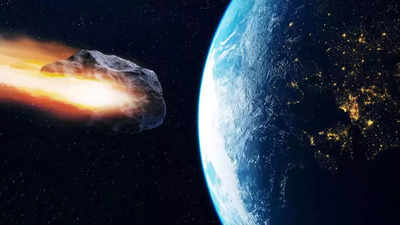[ad_1]
Asteroids were once remnants of the early solar system; they are still attracting our attention today, especially as threats of impacting the Earth. The majority of the asteroids pass without causing damage, but some come too close to our earth. One of the close-by asteroids is 2025 CQ, which will pass by Earth today, which is February 5. Scientists have said that there is no danger yet, but it is a reminder of the monitoring of Near-Earth Objects (NEOs). As the space agencies monitor these objects, knowing their orbits and developing defensive technologies is still essential in protecting us from potential dangers in the future.
Asteroid 2025 CQ set to pass near Earth on February 5, 2025
An asteroid named 2025 CQ, about the size of a 15-story building, is expected to pass near Earth on February 5 at 7:37 PM IST. This asteroid, with a width of 150 feet, belongs to the Apollo group of asteroids and will be traveling at an impressive speed of 60,898 kilometers per hour. Scientists have said that such asteroids pose no threat to Earth immediately, but their presence will always be a concern for threats from space.
How close asteroid 2025 CQ will approach Earth?
At an average distance between Earth and the Moon, about 5.7 times farther, asteroid 2025 CQ will come by Earth, at a distance of 2.2 million kilometers. Astronomically speaking, this would be considered a “close approach.” Objects in this category, which are NEOs, or Near-Earth Objects, are continuously monitored as their paths could change over time, especially from gravitational interactions with other planets and celestial bodies.
What would happen if asteroid 2025 CQ struck Earth?
An asteroid like 2025 CQ entering Earth’s atmosphere could explode in the sky with a force far stronger than any nuclear explosion. The similar event in 2013 over Chelyabinsk, Russia, involved a 66-foot asteroid that exploded mid-air, causing considerable damage to buildings with broken windows and injuring over 1,500 people. A larger asteroid impact could be catastrophic, destroying an entire city.
What are Apollo asteroids?
Apollo asteroids are actually space rocks whose orbit crosses with that of the Earth around the Sun. Of these, while many are considered harmless, several could potentially hit our planet at least one of them big and big enough-more than 460 feet in diameter and coming within 7.5 million km distance from our earth. Although 2025 CQ is smaller than the threshold for being classified as potentially hazardous, its high speed increases the potential risk it could pose if it were ever to collide with Earth.
How NASA tracks potentially harmful space rocks?
NASA and its international partners have been employing cutting-edge telescopes like Pan-STARRS, the Catalina Sky Survey, and NEOWISE to monitor asteroids. All the information received from these observatories is assessed by NASA’s Center for Near-Earth Object Studies, CNEOS. In case an asteroid becomes dangerous enough for Earth, NASA is developing technologies that could help avoid or at least minimize the effect of such a disaster. One recent example is the DART mission, where, for the first time in 2022, an asteroid was successfully deflected from its original trajectory.
Also Read | NASA astronaut Don Pettit captures breathtaking image of world’s tallest building from space
[ad_2]
Source link
